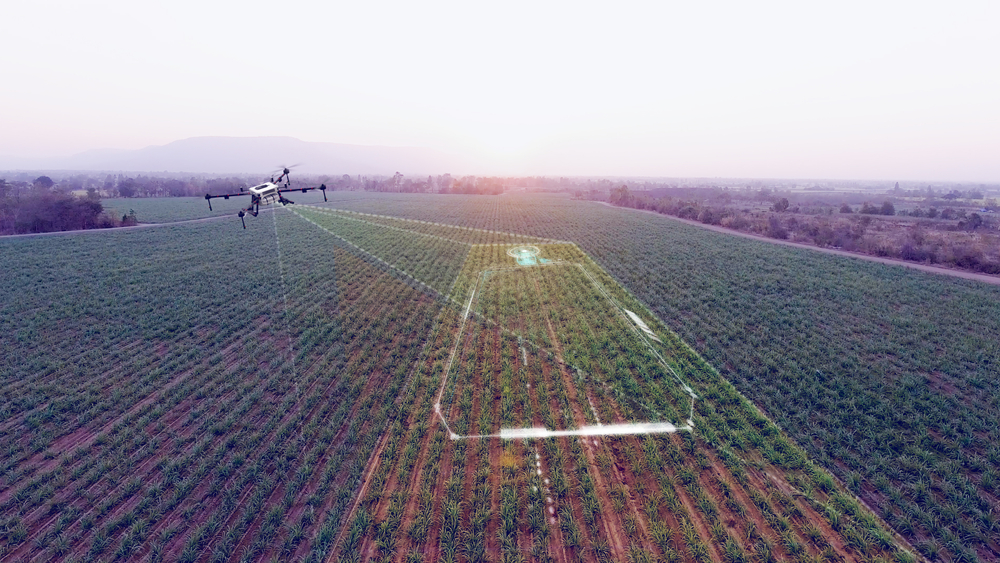How to Strategically Scale Your Drone Business: A Modern Guide to Growth, Value, and Industry Leadership
The drone industry is experiencing rapid growth, but true, lasting success demands intentional strategies, careful planning, and a touch of bold innovation. Whether your focus is on astonishing cinematic captures, utilizing NDVI maps for field surveys, or reshaping B2B logistics, this comprehensive guide is designed to steer your drone business towards ambitious and precise expansion.
1. Understand and Define Your Market
The key? Identify precisely who you’re targeting and the unique value you provide. Distinguishing yourself from a hobbyist to a thriving drone business requires in-depth knowledge of your audience and their challenges. Start with detailed market research: study industry shifts, outline customer categories (real estate, agriculture, construction, etc.), and examine competitors’ products.
Pro Tip: Rather than pursuing every possible avenue, focus on the most promising. The drone sector is rich with untapped niche markets. You could become the premier choice for thermal roof scans in a snowy region or agricultural drone mapping in the Midwest, as specialists often secure higher payments and client loyalty.
Data Snapshot: The FAA projects over 835,000 commercial drones will be operational in the U.S. by 2025, with global market growth anticipated in agriculture, logistics, infrastructure inspections, and media.
2. Nail Down Your Value Proposition
Consider what makes your drone business stand out. Is it speed, unique analytics, superior image quality, or exceptional customer service? Setting yourself apart is crucial to avoid competing solely on price.
Example: A drone service company partnered exclusively with a key regional real estate firm, offering 3D virtual tours with market data overlays, enabling agents to close deals around 20% faster.
Focus on High-Signal Activities
Instead of simply staying busy, concentrate on high-impact tasks that genuinely drive progress, such as:
- Forming strategic alliances with reputable organizations (e.g., energy firms, insurers, logistics companies).
- Designing new service packages for varied sectors (e.g., real estate vs. infrastructure).
3. Invest in Technology & Talent
Scaling effectively involves doing better, not just more. Often, your competitive advantage will stem from using the latest drone technology and skilled personnel.
Upgrade Your Equipment—Strategically
- Select drones that match your aspirations, not just budget constraints. Look for long flight durations, intelligent sensors, advanced obstacle avoidance, and compatibility with professional software.
- For ventures into drone delivery, secure drones with precise navigation systems and secure payload management capabilities.
Expand and Train Your Team
Growth entails expanding your team. Employ certified pilots, technicians, and data analysts to handle larger projects across various locations while maintaining quality.
Training is essential. Stay updated with regulatory changes and technological advancements by organizing regular workshops, either internally or with industry experts.
4. Diversify Service Offerings
To foster resilience and boost revenue, branch out into complementary services:
- Data Analysis and Processing: Many clients seek actionable insights beyond raw data. Providing geospatial reports, AI-driven detection, or data integration can strengthen relationships and enhance profit margins.
- Training and Consulting: Share your expertise—train drone pilots, advise on regulatory compliance, or conduct local workshops.
- Maintenance & Support: Offer drone support post-sale, routine maintenance, or fleet management for business customers.
5. Prioritize Marketing and Relationship Building
Skills are vital, but attracting the right audience is equally crucial. Success in today’s drone marketplace relies on both connection and capability.
Personalize Your Approach
- Segment your audience (by industry or necessity) and customize communication accordingly.
- Utilize client data to create personalized offers and content. For example, provide loyalty discounts to real estate customers during peak selling seasons.
Demonstrate Value
- Host lively drone demo days for target industries.
- Share client success narratives (including photos, statistics, and testimonials) across LinkedIn, Instagram, and your website.
- Establish expertise with educational content: “How to choose the best drone for property inspection” or “Understanding new FAA drone regulations.”
Grow and Guard Your Online Reputation
- Highlight client successes and positive reviews on your homepage and landing pages.
- Respond promptly to inquiries and feedback—quick responses reflect professionalism and set you apart.
6. Master Regulations and Compliance
Avoid administrative setbacks by mastering regulations that could significantly affect your drone operations.
- Get certified: In the US, it’s FAA Part 107; in the EU, licenses fall under EASA’s open and specific category.
- Stay current: Monitor changes in local, national, and international regulations, adjusting operations as necessary.
- Insure Your Operations: Drone insurance is both prudent and often mandatory. Ensure coverage for both liability and equipment.
- In certain sectors (e.g., delivery, infrastructure inspection), collaborate with legal experts to ensure comprehensive compliance.
Expert Note: Regulations are becoming more stringent, especially concerning privacy/data handling and BVLOS (beyond-visual-line-of-sight) operations. Incorporate compliance expertise into your sales strategy.
7. Build Partnerships and Collaborations
No drone business should exist in solitude. Strategic partnerships can lead to new client opportunities, enhanced expertise, and shared risks.
- Partner with tech companies: Collaborate with software firms to enhance data analytics.
- Work with logistics, healthcare, or agricultural businesses for mutually advantageous initiatives.
- Network: Join industry associations, local business groups, and participate in or sponsor key drone expos.
8. Create a Scalable Operations Framework
With a growing client base and expanding fleet, systems become your ultimate advantage.
- Standardize Processes: Create and document standard operating procedures (SOPs) for flight operations, data management, maintenance, and customer onboarding.
- Streamline Logistics: Employ cloud tools for scheduling, order management, and digital mapping.
- Adopt Automation: Where feasible, implement tools for automated post-processing, route planning, or client communications.
9. Watch the Numbers: Data-Driven Decision Making
What gets measured improves. Utilize analytics to track key growth indicators:
- Average revenue per client
- Churn/renewal rates
- Cost of acquisition (CAC) and lifetime value (LTV)
- Equipment utilization rates
Regularly assess these metrics, adjusting pricing or services when necessary, and reallocate resources to where returns are strongest.
10. Real Stories, Real Growth
“From Solo Shooter to Regional Leader”
When Anna launched her aerial photography business, she focused initially on weddings and local real estate. By honing in on construction progress reporting and investing in drone mapping technologies, she secured contracts for major infrastructure projects. Her team of five now operates across three states, making her company the go-to for site managers requiring swift, dependable updates.
“Delivery Drones: Not Sci-Fi”
In Texas, a small team initiated medical supply delivery for a regional hospital network. By designing drones specifically for safe blood and medication transport, and meeting regulatory standards, they aided rural hospitals in life-saving operations and secured a lucrative logistics contract with a city agency.
11. Stay Ahead: Embrace Trends and Innovation
The drone industry is continuously evolving. Stay abreast of the latest developments:
- BVLOS Operations (Beyond Visual Line of Sight): As regulations ease, opportunities expand for long-range utility inspections and package delivery.
- AI in Drone Data: Look forward to increased automation and intelligent analytics.
- Eco-Friendly Drones: As sustainability becomes crucial, solar-powered and hybrid drones are likely to gain interest.
Attending industry conferences, engaging in online courses, and subscribing to reputable drone industry newsletters ensure your business stays ahead.
12. The Human Side: Our Approach
At [Your Brand], we prioritize combining technical aptitude with genuine empathy. We’ve transformed clients frustrated with subpar drone footage into market leaders. Our pilots revel in the “wow” moments when clients first access crystal-clear aerial insights. We guide aspiring drone entrepreneurs, offer complimentary community workshops, and treat partners like family—because trust is something you earn, not purchase.
Your Next Flight Plan
Scaling a drone business isn’t about quick wins; it’s about strategic longevity marked by enthusiasm and interpersonal connections. Study your market, invest strategically, cultivate enduring partnerships, and embrace continual learning. Whether your passion lies in drone delivery, precision mapping, or the artistry of drone storytelling, the sky isn’t a limit—it’s the beginning of your journey.
Have questions? Looking to strategize your next significant leap? Contact our team—we’re committed to helping you soar higher, further, and more intelligently.













